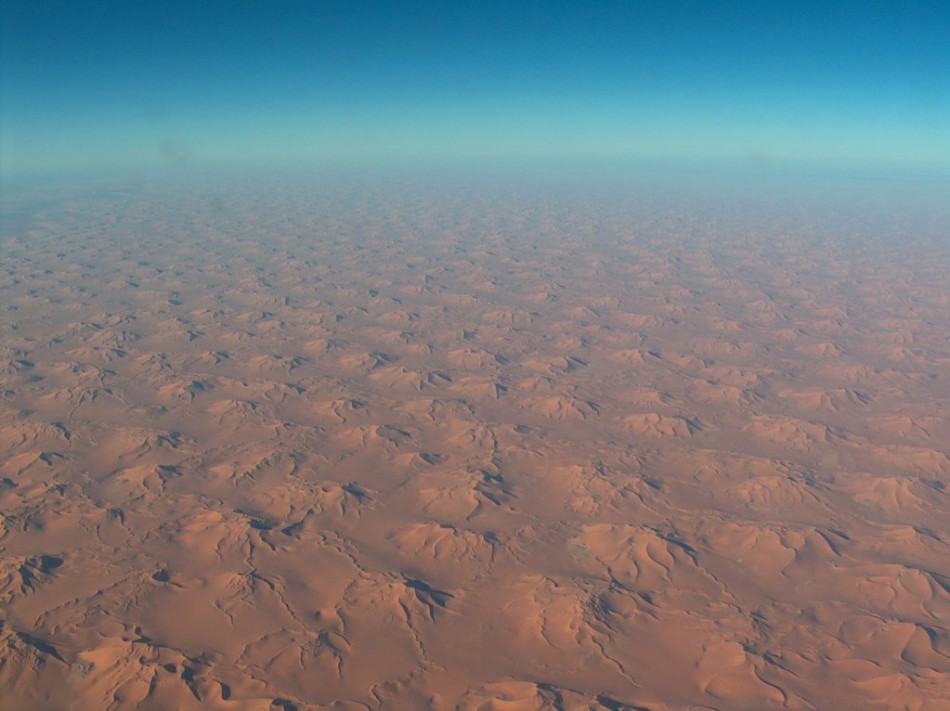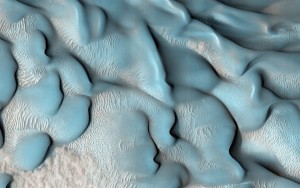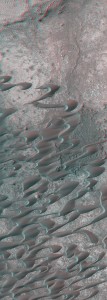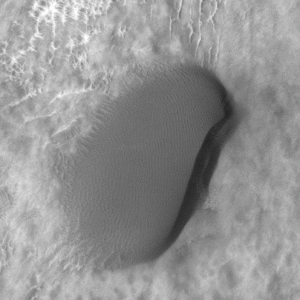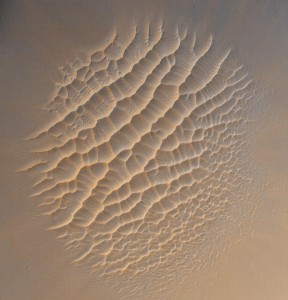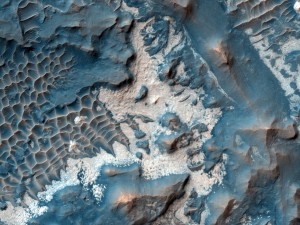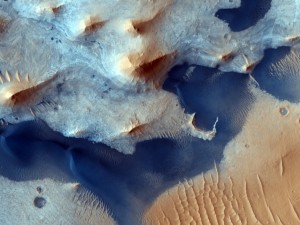Photo taken in Ouargla, Algeria. © All Rights Reserved by JDLS via Google Maps.
I put the “electric geology” tag because this could fit into the discussion of dune formation.
The dunes here seem to follow the so called star shape. Wikipedia says:
Radially symmetrical, star dunes are pyramidal sand mounds with slipfaces on three or more arms that radiate from the high center of the mound. They tend to accumulate in areas with multidirectional wind regimes. Star dunes grow upward rather than laterally. They dominate the Grand Erg Oriental of the Sahara. In other deserts, they occur around the margins of the sand seas, particularly near topographic barriers. In the southeast Badain Jaran Desert of China, the star dunes are up to 500 metres tall and may be the tallest dunes on Earth.
So, as always, let’s go to Mars and check the differences and similarities:
The first 3 ones on top in my opinion resemble (a bit) more to earth dunes, that is, as if made by the wind. Let’s not forget however that Martian atmosphere’s density is just 0.6% of the Earth’s. In the other three photos the dunes seem to stack forming voronoi-like cells.
At thunderbolts.info they have touched the subject of Martian dunes. I quote an excerpt from the article Ionic Tempest:
A Martian dust storm obscured an entire hemisphere several months ago. However, Opportunity reported only small pressure increases and minimal sand accumulation. This lends credence to the idea of “blowing” dust on Mars being caused by electrostatic discharges, rather than through the movement of its rarified atmosphere.
An ionic storm sometime in the recent past must have scoured immense amounts of material from the surface of Mars, gathering it into piles that are not oriented to prevailing wind patterns, but follow the line of charge transfer as it blew across the landscape. After the discharge passed, the heaps of ionized material instantly solidified in the same way as a volcanic pyroclastic flow will immediately harden into stone after it stops moving.
Electric weather? Here’s some electric tornado.
Also, see this:
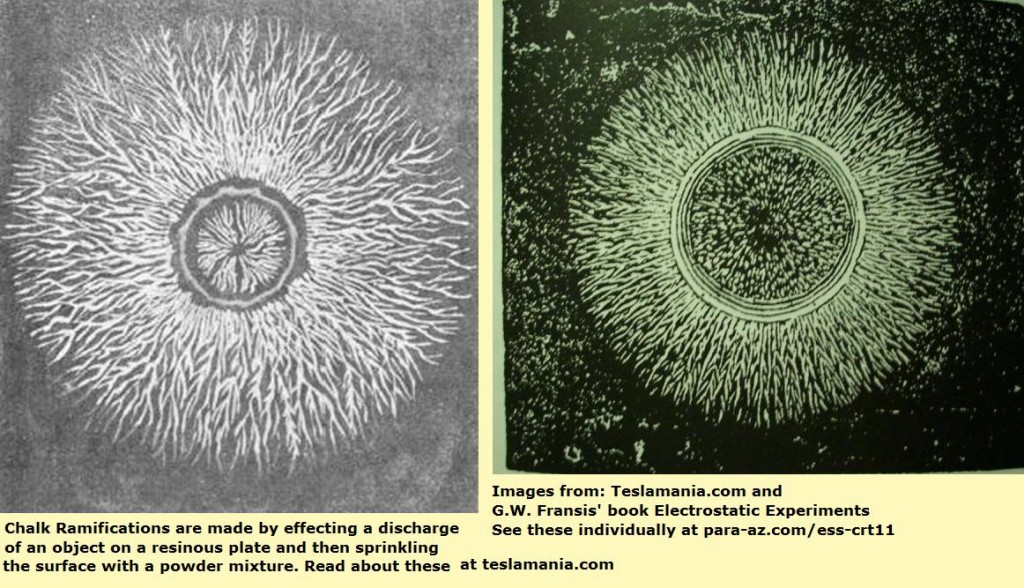
Chalk Ramifications are made by effecting a discharge of an object on a resinous plate and then sprinkling the surface with a powder mixture. Images from Teslamania.com and G.W. Fransis’ book Electrostatic Experiments. See these individually at para-oz.
And this video:

